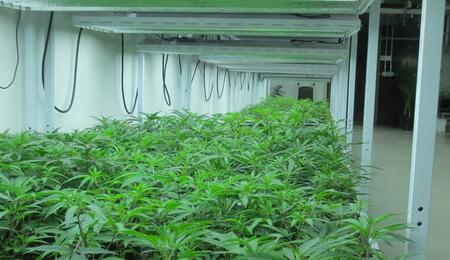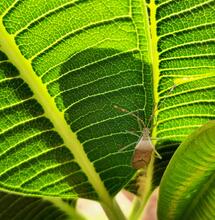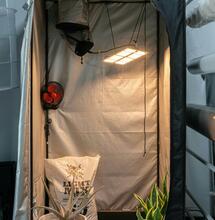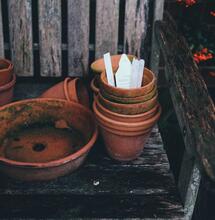Phylos Bioscience

Hit the site, www.phylosbioscience.com and launch the “Galaxy” to see a 3D map of more than 2,000 different cannabis varieties that shows their relationship (kinship) to one another. The Galaxy resembles the heavens above with an endless array of stars (cannabis varieties). The cannabis samples are sent legally via US mail or courier from different dispensaries, breeders and clone makers. Few of the samples are from commercial cannabis seed companies.
www.phylosbioscience.com By Jorge Cervantes jorge@marijuanagrowing.com
You can search specific varieties and find:
- Closest Genetic Relatives
- Colonial Relationships
- Genetic Novelty Score
- Population Profile
- Genetic Variation
Phylos Bioscience has sequenced the DNA of these cannabis varieties, a major step forward in cannabis breeding and genetic classification. It gives cannabis breeders a chance to update the 1950s techniques they are using now to new scientific methods in 2017. Inexpensive scientific instruments and legal tests available to cannabis breeders today were not available a couple of years ago. Today legal inexpensive scientific tests are opening the door for cannabis breeders to develop new stable super varieties. The Phylos Bioscience database can be searched by variety name or the name of the breeder or the business/individual that submitted the sample. I typed in a few familiar names of world-class breeders, David Watson, Rob Clarke, and Mel Frank. They are my mentors. They know how to stabilize a variety. To exemplify this point, hit these links and scroll down to the “Genetic Variation” graph.
https://testing.phylosbioscience.com/sample/genotype/5gkvyno2, https://testing.phylosbioscience.com/sample/genotype/p8rrnk8r, https://testing.phylosbioscience.com/sample/genotype/6g60y1kg, https://testing.phylosbioscience.com/sample/genotype/p8rrjp8r, https://testing.phylosbioscience.com/sample/genotype/woyje2or.
Note that all of the varieties are extremely stable. Now check out these graphs. https://testing.phylosbioscience.com/sample/genotype/1oe53kop, note that the popular variety Lavender is extremely unstable. The same instability is found in Grand Daddy Purple from the clone group, https://testing.phylosbioscience.com/sample/genotype/7g30zrgw. This is just the tip of the iceberg for unstable varieties. Search the Galaxy for more varieties you know and love to learn the results. Clones have become popular among cannabis cultivators around the world because they offer consistent growth and stable genetics. But clones often harbor diseases and pests. Once the cannabis seed industry matures growers will be planting stable F1 varieties that are stronger produce better than clones. Genetic stability is essential and one of the main pillars of seed breeding.
These three breeders are working with extremely stable stock from the beginning. This sets them apart from the vast majority of “breeders” that work with unstable genetics. The samples these three breeders submitted to Phylos Bioscience were either landrace varieties that had generations to stabilize and breed true or they were true breeding varieties that were crossed together until they stabilized and bred true. Few stable varieties exist today because of the haphazard way the illegal hyped-up market was forced to evolve. There are hundreds of cannabis seed sellers on the internet and thousands of retail cannabis seed outlets in Canada, Europe and a growing number in the USA. Unfortunately, the vast majority of these varieties are at best, somewhat stable and a rare few are very stable. Why is working with stable varieties important?
Cannabis is an outbreeder just like people horses and dogs. If an outbreeding person, horse, dog or cannabis plant is crossed to an immediate family member – sister, brother, mother, father, aunt, uncle, first cousin – recessive genes coincide. When recessive genes pair up, the recessive traits – weak growth, weak branching, low cannabinoid profile, disease and pest resistance, etc. – can manifest in the first generation of seed or latent recessive genes can surprise you several generations later. Such recessive genes are responsible for people horses, dogs and cannabis with more genetic imperfections. Selective breeding using ancient empirical observation has dominated breeding programs plagued by the restrictions from clandestine cultivation. Legal cannabis has opened the door to breeders who can follow scientific principles. But, those traits can be positive too. This is the selection process - remove the bad offspring and keep the good ones.
Inbreeding (immediate family crossing) can be good if you can remove the amplified problems and keep the desirable characteristics. Making a true breeding cannabis variety is much more complex and difficult than crossing plants a few times. Ancient methods require years of growing a plant population that continually breeds back to the same population. Or modern breeding techniques – DNA sequencing and (genetic) marker assisted selection – can be used. The best part is that this is NOT GMO (Genetically Modified Organism), it is Mendelian genetics on steroids. But, even with the best genetic information from thousands of plants it can take 6 generations or more to ensure a variety is stable. Regardless of what happens today, breeders that use DNA sequencing and marker assisted selection in their breeding program will develop stable varieties faster than breeders using antiquated methods.
These varieties can be crossed into F1 varieties that are 25% stronger – bigger and grow faster – than weaker genetics and clones. These new varieties will be bigger and grow faster and have many more stacked traits than the plants grown today. There is no reason to settle for second best from any seed company. Some varieties grow incredibly well outdoors once they acclimate to a geographic region. These huge plants grew in Paul Stanford’s medical garden in Portland, Oregon. Stanford has given – free of charge – more than three metric tons of cannabis to needy patients. Stable breeding stock is “true breeding” which means that if you plant 10 seeds of the same variety, all of the plants that sprout produce the same phenotype – look the same and grow the same given the same conditions.
This is because they are of a stable genotype – genetic makeup. When plants are bred that have unstable genetics, the offspring (genotypes/phenotypes) do not look the same. The offspring are not stable and all subsequent generations will not be stable. Think about the last time you planted 10 seeds from a “reputable” seed company. Did they all sprout and all look the same at harvest? What did you do with the strong plants from the seed batch? If you cloned them like most gardeners do, you are growing inherently second-rate genetics. This is fine if you are growing from clone. Those clones have been selected for specific traits that are advantageous, but clone-based growing has certain drawbacks.



.png)